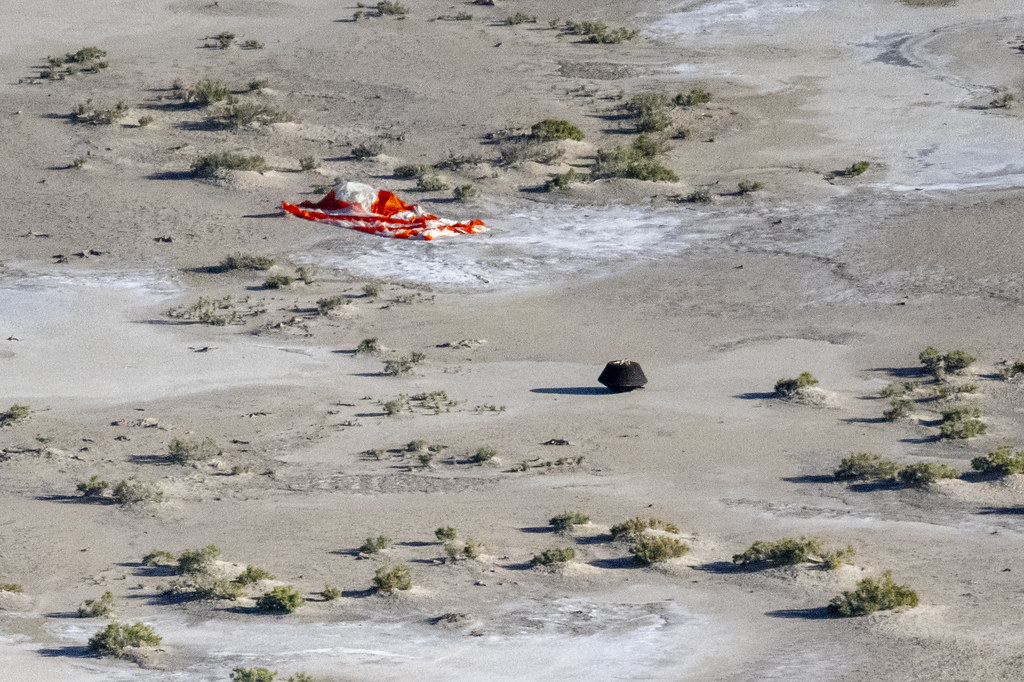#Utah Test and Training Range
Video
OSIRIS-REx Sample Return (NHQ202309240001) by NASA HQ PHOTO
Via Flickr:
The sample return capsule from NASA’s OSIRIS-REx mission is seen shortly after touching down in the desert, Sunday, Sept. 24, 2023, at the Department of Defense's Utah Test and Training Range. The sample was collected from the asteroid Bennu in October 2020 by NASA’s OSIRIS-REx spacecraft. Photo Credit: (NASA/Keegan Barber)
#Asteroid Sample Return#Origins Spectral Interpretation Resource Identification Security-Regolith Explorer (OSIRIS-REx)#Utah#Utah Test and Training Range#Origins Spectral Interpretation Resource Identification Security#Dugway#UT#NASA#Keegan Barber#flickr
0 notes
Photo
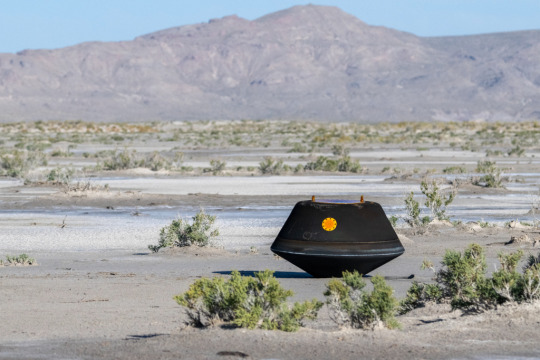
2023 September 29
Back from Bennu
Image Credit: NASA/Keegan Barber
Explanation: Back from asteroid 101955 Bennu, a 110-pound, 31-inch wide sample return capsule rests in a desert on planet Earth in this photo, taken at the Department of Defense Utah Test and Training Range near Salt Lake City last Sunday, September 24. Dropped off by the OSIRIS-Rex spacecraft, the capsule looks charred from the extreme temperatures experienced during its blistering descent through Earth's dense atmosphere. OSIRIS-Rex began its home-ward journey from Bennu in May of 2021. Delivered to NASA’s Johnson Space Center in Houston on September 25, the capsule's canister is expected to contain an uncontaminated sample of about a half pound (250 grams) of Bennu's loosely packed regolith. Working in a new laboratory designed for the OSIRIS-REx mission, scientists and engineers will complete the canister disassembly process, and plan to unveil the sample of the near-Earth asteroid in a broadcast event on October 11.
∞ Source: apod.nasa.gov/apod/ap230929.html
150 notes
·
View notes
Text

The Strange Disappearance of Kenny Veach
The Mojave Desert, located in the southwestern United States, is a brutal and unforgiving landscape.
Sprawling over parts of four states; California, Nevada, Arizona and Utah, the area is so vast that entire European countries like Ireland and Iceland could fit comfortably within its boundaries.
The “high desert” is prone to extreme temperatures and arid conditions. In November of 2014, an American hiker named Kenny Veach had a strange encounter with a mysterious cave in the Sheep Mountain area, just north of Las Vegas.
Once, he posted: “I hike over mountain top after mountain top and sleep on peaks under the stars . . . Sometimes I have to scale giant cliffs to get myself out of a jam, but I always make it back.”
He was proud of the fact that there was only one time that he had to be rescued on one of his adventures, and that was when he injured his leg at the top of a mountain.
Tired of the daily Monday-through-Friday grind, Kenny wanted to be his own boss, be in charge of his own life, and have the free time to immerse himself in his desert explorations.
So, he quit his day job and decided to be an inventor. He started a YouTube channel, documenting his creations and his forays into the desert.
It was in June of 2014, using the name Snakebitmcgee, Kenny left a comment in response to a YouTube video that read: That ain’t nothing. I am a long-distance hiker. One time, during one of my hikes out by Nellis Air Force Base, I found a hidden cave.
The entrance to the cave was shaped like a perfect capital M. I always enter every cave I find, but as I began to enter this particular cave, my whole body began to vibrate.
The closer I got to the cave entrance, the worse the vibrating became. Suddenly, I became very scared and high-tailed it out of there. That was one of the strangest things that ever happened to me.
Unbeknownst to Kenny and the rest of the world, that comment would have tragic consequences.
Kenny’s comment on that video sparked a flurry of requests for him to prove his claim.
Since he hadn’t documented the first trip to what would become known as “the M cave”, he needed to go back to the area to locate it and, this time, document what he found.
On his second search for the cave, he went armed with a 9-millimeter handgun and a video camera.
He documented some wildlife and found a whole horde of pine nuts that he gleefully ate on camera. He stood next to an abandoned mine shaft and rather sheepishly declared that he was unable to find the cave on his second hike.
Much to Kenny’s dismay, that video was met with criticism. Many thought he had made the whole thing up, and the public demanded proof of his claim of a mysterious cave with supernatural properties.
Viewers actively encouraged, and some even dared Kenny to go back out to the mountain range a third time.
However, one comment on his video, which has since been deleted, read, “No! Do not go back there. If you find that cave entrance, don’t go in, you won’t get out.”
Whether that comment was made by somebody teasing Kenny or whether it was a serious warning by somebody who was personally familiar with the cave is unknown.
Regarding the M cave, Kenny said, “I solo hike across mountain tops that most people wouldn’t dare go. I have been in more caves than I can count. I play with rattlesnakes for fun. But this one particular cave was beyond anything I had ever encountered.”
Hoping to put the naysayers in their place, Kenny hiked out to the territory a third time.
On the 10th of November 2014, Kenny once again made his way to the Sheep Mountain area, which is close to the U.S. Air Force installation called Area 51, known for its speculated connection to UFOs and secret government experiments.
It’s located near Groom Lake and is within the Nevada Test and Training Range. As late as 2012, the U.S. government denied the existence of Area 51, and it is still closed to the public.
Both ground and aerial searches were conducted, but no sign of Kenny could be found.
Dave Cummings from Red Rock Search & Rescue reported finding Kenny’s cell phone next to an abandoned vertical mine shaft, where he filmed part of the M cave video.
Specially trained individuals were called in to conduct a search of the mine. Unfortunately, aside from his vehicle and his cell phone, no trace of Kenny was ever found.
23 notes
·
View notes
Text

AAR over the Utah Test and Training Range
#Boeing#KC-135#Stratotanker#Lockheed#F-35#Lightning II#Stealth Fighter#Tanker#aerial refueling#AAR#tanking#USAF#Aircraft#Military aviation
32 notes
·
View notes
Text
Touchdown! Alien Rock Returned from Billions of Miles Away!

After traveling billions of miles to Bennu and back, the OSIRIS-REx spacecraft released its sample capsule toward Earth’s atmosphere at 6:42 a.m. EDT (4:42 a.m. MDT). The spacecraft was 63,000 miles (102,000 kilometers) from Earth’s surface at the time – about one-third the distance from Earth to the Moon.
Traveling at 27,650 mph (44,500 kph), the capsule pierced the atmosphere at 10:42 a.m. EDT (8:42 a.m. MDT), off the coast of California at an altitude of about 83 miles (133 kilometers). Within 10 minutes, it landed on the military range. Along the way, two parachutes successfully deployed to stabilize and slow the capsule down to a gentle 11 mph (18 kph) at touchdown
“The returned samples collected from Bennu will help scientists worldwide make discoveries to better understand planet formation and the origin of organics and water that led to life on Earth, as well as benefit all of humanity by learning more about potentially hazardous asteroids”
After years of anticipation and hard work by NASA’s OSIRIS-REx (Origins, Spectral Interpretation, Resource Identification and Security – Regolith Explorer) team, a capsule of rocks and dust collected from asteroid Bennu finally is on Earth. It landed at 8:52 a.m. MDT (10:52 a.m. EDT) on Sunday, in a targeted area of the Department of Defense’s Utah Test and Training Range near Salt Lake City.
Within an hour and a half, the capsule was transported by helicopter to a temporary clean room set up in a hangar on the training range, where it now is connected to a continuous flow of nitrogen.
Getting the sample under a “nitrogen purge,” as scientists call it, was one of the OSIRIS-REx team’s most critical tasks today. Nitrogen is a gas that doesn’t interact with most other chemicals, and a continuous flow of it into the sample container inside the capsule will keep out earthly contaminants to leave the sample pure for scientific analyses.
76 notes
·
View notes
Text

OSIRIS-REx Sample Return
The sample return capsule from NASA’s OSIRIS-REx mission is seen shortly after touching down in the desert, Sunday, Sept. 24, 2023, at the Department of Defense's Utah Test and Training Range. The sample was collected from the asteroid Bennu in October 2020 by NASA’s OSIRIS-REx spacecraft.
Photo Credit: (NASA/Keegan Barber).
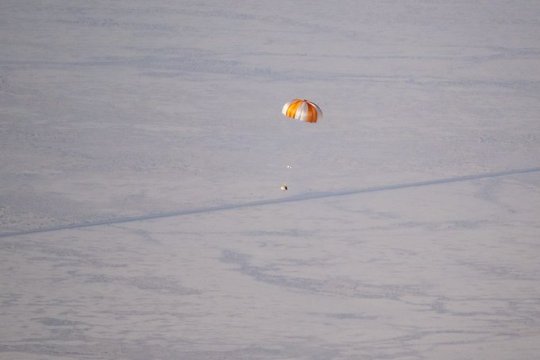
#NASA’s OSIRIS-REx mission#OSIRIS-REx Sample Return#NASA’s OSIRIS-REx spacecraft#asteroid bennu#nasa#nasa photos#nasa picture of the day#space#spaceship#spacecraft#its here
52 notes
·
View notes
Text
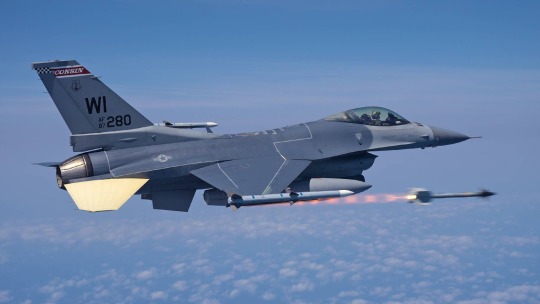
Inside The Air Force’s Biggest Live Air-To-Air Missile Shoot
Jamie HunterPUBLISHED Jun 12, 2023 11:32 AM EDT
An F-16C fires an AIM-9M Sidewinder during Exercise Combat Archer in May 2023. Jamie Hunter
“It’s incredibly important for us to get a weapons system evaluation of all of our munitions, whether it’s air-to-ground or air-to-air,” Col. Brian DeWitt, 53rd Weapons Evaluation Group (WEG) commander explains to The War Zone. To meet this requirement, the U.S. Air Force regularly invites its fighter squadrons to Tyndall Air Force Base in Florida to gain experience and hone their skills firing live missiles at real airborne targets.
In this exclusive five-part, week-long series, The War Zone brings unprecedented inside access to Exercise Combat Archer, also known as the Weapons System Evaluation Program, or WSEP, where not only U.S. Air Force, but also U.S. Navy, and U.S. Marine Corps units work hard to ensure that when a pilot locks up a target, it can be dealt a lethal blow.
The missile firing that occurs at Tyndall has a dual purpose. “Under U.S. Code Title 10, there’s a mandated requirement [for the military] to undertake both development and operational testing of its equipment, and part of that is to take fielded weapons and test them to ensure they meet requirements for sustainability, reliability, and lethality,” Col. DeWitt explains.
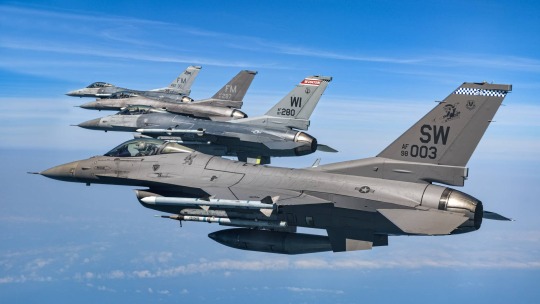
F-16Cs from the 20th Fighter Wing at Shaw AFB and from the 93rd Fighter Squadron "Florida Makos" head out for a Combat Archer mission, with live missiles carried on their starboard wings. Jamie Hunter
The military airborne range complex over the Gulf of Mexico that abuts the Florida coastline is a hotbed of development testing for new weapons, as well as being a training environment for frontline forces.
youtube
WSEP dates back to the Vietnam War when squadron pilots and their weapons systems failed to meet expectations. During that conflict, sophisticated new air-to-air missiles didn't perform in the manner predicted by their developmental test data. It was recognized that the testing often failed to represent the environment pilots would actually face in combat.
WSEP was therefore established to give fighter squadrons the opportunity to employ air-to-air weapons in situations that are as close to a combat environment as possible. “This isn’t just a weapons evaluation, it’s about weapons performance through unit effectiveness,” says Col. DeWitt.

A Raytheon AIM-120 Advanced Medium-Range Air-to-Air Missile (AMRAAM) loaded on an F-15C during Combat Archer in May 2023 complete with a brown band to denote a live rocket motor, and a yellow band to denote that it has a live warhead. Jamie Hunter
The 53rd WEG is a critical element of Air Combat Command (ACC), and part of the renowned 53rd Wing, which is one of the lead units responsible for Air Force operational testing and major test exercises such as Black Flag, which features strongly in evaluating cutting-edge USAF capabilities, as previously reported by The War Zone on more than one occasion.
The WEG is headquartered at Tyndall AFB, on the shores of the Gulf of Mexico in the Florida Panhandle. It is responsible for a key part of the Title 10 test and evaluation work for the Air Force in the form of the Combat Archer and Combat Hammer WSEPs.
While Combat Hammer is typically run out of Hill Air Force Base in Utah and focuses on air-to-ground munitions evaluations, Combat Archer is all about firing live air-to-air missiles, designed both to ensure the weapons work as expected, and that squadrons are suitably trained and equipped to effectively employ the weapons.

The packed Combat Archer flight line in May 2023 with a mix of F-16s, F-15s, and F-35s. Jamie Hunter
The WEG includes a number of distinctive units at Tyndall that each bring a key capability to the overall effectiveness of Combat Archer. The 83rd Fighter Weapons Squadron (FWS) is ultimately responsible for running the exercises. It includes weapons specialists and Program Managers (PMs), who coach each fighter squadron in the Air Force and Navy as they take their turn to participate in a WSEP.
“The Program Managers are aircrew instructors in each specific aircraft type,” explains Col. DeWitt. “They are the experts when the units come here. They teach the aircrews and fly with them, chase them through each shot and ensure they are employing correctly with the different missiles, which are typically Raytheon’s AIM-9M and -9X Sidewinders and AIM-120 AMRAAMs [Advanced Medium-Range Air-to-Air Missiles]. Some WSEPs also include aerial gunnery, firing at towed banners.”
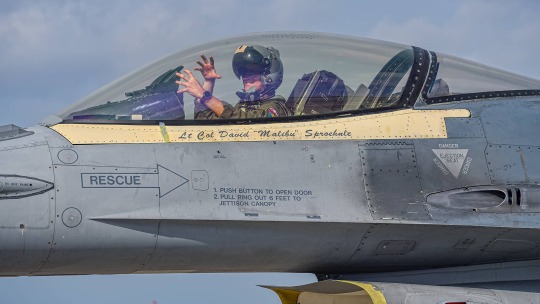
A 93rd Fighter Squadron "Florida Makos" pilot gives the squadron hand sign of the jaws of the Mako shark. Jamie Hunter
Each year the WEG runs approximately nine Combat Archers at Tyndall (there are also occasional events at Hill AFB), and the visiting squadrons prepare for the exercise, deploy to Tyndall, and participate in the live firing, under the expert guidance of the PMs. Ultimately, the squadrons come to Tyndall to fire live missiles, to both check out new hardware and software on those weapons, and to give squadron weapons teams and aircrew the experience of actual end-to-end employment of their primary weapons.
“I also have a number of maintainers here that are weapons evaluators,” Col. DeWitt adds. “They follow, observe, and assist the deployed units to see how effective they are. Have they shown up with the right equipment and the right training? How can we help them so that when they go and do this for real downrange they have the practice, they feel good about what they’ve been trained on, and it’s not their first time doing it.”

An F-15C of the California Air National Guard gets airborne during Combat Archer. Jamie Hunter
Firing off live, high-tech missiles, near the Florida coastline isn’t without its challenges, including major safety and security concerns. Creating a realistic and safe training environment includes fitting missiles with telemetry packs instead of warheads and the jets themselves carrying telemetry pods to track their position in the airspace. Ultimately, the aim is successfully shooting at fighter-representative targets. Each performance — from the weapons-loading team to the pilots — is scored based on the probability-of-kill (pk) rate and targets hit during the sorties.
The huge Eglin Gulf Test Range and Training Range, which lies adjacent to Tyndall, is monitored, and controlled by the resident 81st Air Control Squadron. With oil and gas exploration, shipping, fishing, and a range of surface activities, the missile shooting areas must be ‘sanitized’ before the daily exercise activities can commence. This involves use of two surveillance-radar-equipped E-9A Widgets, which are operated by the 82nd Aerial Targets Squadron (ATRS) and used to build an up-to-the-minute picture of the ocean’s surface inside the ranges. This enables the 83rd FWS team to build a safe ‘shoot track’ for each day’s WSEP activities.
Part of the 82nd ATRS mission also aligns directly with the Title 10 mandate in that the unit provides combat-configured, combat-representative, target drones for the missile shots. The Air Force uses both the Kratos BQM-167 sub-scale drone, and the Boeing-converted QF-16 Full-Scale Aerial Target (FSAT) to fulfill this role, and both are a critical element of each Combat Archer exercise.

A BQM-167 sub-scale drone operated by the 82nd Aerial Targets Squadron is launched for a WSEP mission. USAF/Sara Vidoni
Combat Archer — focusing on air-to-air — is designed to make sure the complete weapons system works. That includes the munitions themselves and the process that takes them from storage, build-up, configuration, and loading, the jets being correctly maintained and configured to fire them, the mission planning, training, and ultimately the moment they are fired and guided to the target. Under scrutiny are the techniques and tactics that are used, to ensure they are all valid and work as planned when called upon. It is ultimately designed to ensure America’s fighter squadrons are ready for combat.
“In the past, we would focus purely on the weapon, from when [the pilot] pressed the ‘pickle’ button to how the weapon performed from there,” explains Col. DeWitt. “Today, we take a wider view of the whole picture to gauge what we need to improve on and where we need to spend money and employ training in order to make this whole process better. Training our people to build the weapons correctly, designing the weapons correctly — all the things that need to happen so that when the pilot presses the button the target blows up when it’s supposed to.”
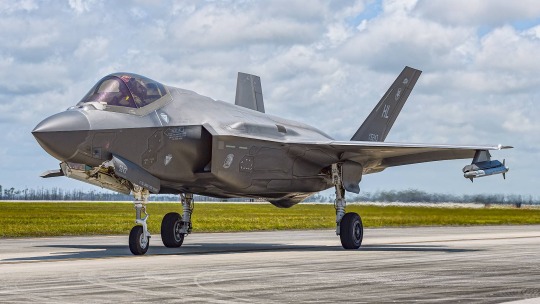
An F-35A of the 4th Fighter Squadron taxies out at Tyndall AFB in May 2023 for a Combat Archer mission. Jamie Hunter
“It used to be a case of whichever unit was available on their schedule would come and do these evaluations, because previously we were mainly focused on the weapon," says Col. DeWitt. "However, we have now changed that to fit with the USAF’s Force Generation model. This means that we are now generally working with units that are getting ready to deploy on combat operations or be ready for combatant commanders to pull downrange when needed. So, they come here and get an outside look at how they're performing, whilst getting them some training and experience. So today, it’s a kind of certification program before they go into combat.”
WSEP has evolved. More than ever, it’s designed to put squadrons and their weapons to the test. These squadrons must be ready for the fight when called upon. WSEP makes sure the entire system works as advertised. But this is a complex exercise with a raft of distinct elements that are key to success.
In this week-long series, we go take an unprecedented look into Combat Archer and its many moving parts, including flying on multiple missile shoot sorties. In part two of the series, The War Zone focuses on the targets that pilots fire at, including how they are equipped and operate, and why some pilots have to fly 'hands-off' in QF-16 drones that are controlled from the ground.
49 notes
·
View notes
Text

NASA completes last OSIRIS-REx test before asteroid sample delivery
A team led by NASA in Utah's West Desert is in the final stages of preparing for the arrival of the first U.S. asteroid sample—slated to land on Earth in September.
A mockup of NASA's OSIRIS-REx (Origins, Spectral Interpretation, Resource Identification, and Security–Regolith Explorer) sample capsule was dropped Wednesday from an aircraft and landed at the drop zone at the Department of Defense's Utah Test and Training Range in the desert outside Salt Lake City. This was part of the mission's final major test prior to arrival of the actual capsule on Sept. 24 with its sample of asteroid Bennu, collected in space almost three years ago.
"We are now mere weeks away from receiving a piece of solar system history on Earth, and this successful drop test ensures we're ready," said Nicola Fox, associate administrator of NASA's Science Mission Directorate in Washington. "Pristine material from asteroid Bennu will help shed light on the formation of our solar system 4.5 billion years ago, and perhaps even on how life on Earth began."
This drop test follows a series of earlier rehearsals—capsule recovery, spacecraft engineering operations, and sample curation procedures—conducted earlier this spring and summer.
Now, with less than four weeks until the spacecraft's arrival, the OSIRIS-REx team is nearing the end of rehearsals and ready for the actual delivery.
IMAGE....A training model of the sample return capsule is seen is seen during a drop test in preparation for the retrieval of the sample return capsule from NASA's OSIRIS-REx mission, Wednesday, Aug. 30, 2023, at the Department of Defense's Utah Test and Training Range. The sample was collected from asteroid Bennu in October 2020 by NASA’s OSIRIS-REx spacecraft and will return to Earth on September 24th, landing under parachute at the Utah Test and Training Range. Credit: NASA/Keegan Barber
13 notes
·
View notes
Text

A US Air Force F-16C Fighting Falcon from the 138th Fighter Squadron, New York Air National Guard releases a GBU-31, 1,000-pound Joint Direct Attack Munition (JDAM) over the Utah Test and Training Range. 7 August 2003
12 notes
·
View notes
Photo
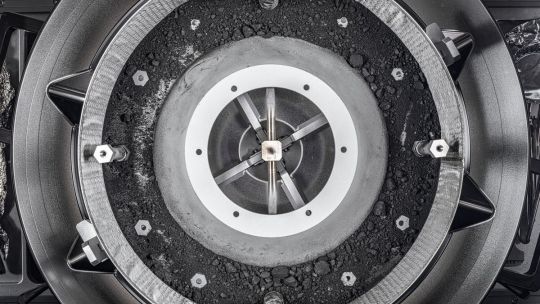
1st look at asteroid Bennu samples suggests space rock may be 'a fragment of an ancient ocean world' | Space
'We're going to be busy for a long, long time. This is an enormous amount of sample for us.’
Scientists are now inspecting snagged, bagged and tagged bits and pieces from asteroid Bennu, the cosmic mother lode delivered by NASA's Origins, Spectral Interpretation, Resource Identification and Security — Regolith Explorer mission.
Known in acronymic astro-speak as OSIRIS-REx, that seven-year-long voyage brought home the goods via a sample return canister that came to full stop on Sept. 24, 2023, parachuting into a remote stretch of the Department of Defense's Utah Test and Training Range. Those specimens from afar are believed to contain the leftovers from the formation of the solar system 4.5 billion years ago.
Space.com caught up with two leading scientists now engaged in extracting what those darkish asteroid particles are illuminating, sorting out how these materials exported from Bennu came to be. But also what insights they hold for the origin of the worlds within our solar system, including Earth. ...
4 notes
·
View notes
Text

A little while ago, the samples taken from the asteroid Bennu brought back to Earth by NASA's OSIRIS-REx space probe were collected by the American space agency's crew in the area of their landing, at the Utah Test and Training Range. They will be transported to the Johnson Space Center, the first stage of a series of operations needed to process them while avoiding their contamination. In this study, NASA is collaborating with the Japanese space agency JAXA, which will receive some of the samples to compare them with those collected by its own Hayabusa 2 space probe on the asteroid Ryugu and returned to Earth in December 2020.
3 notes
·
View notes
Text

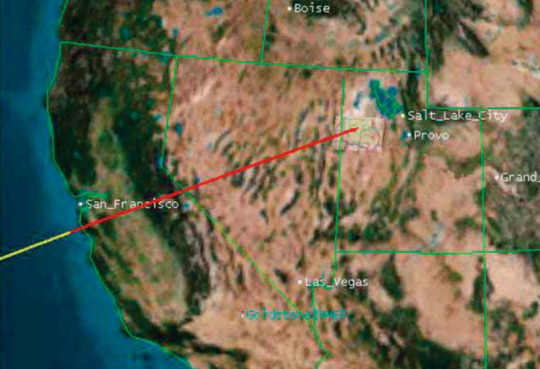
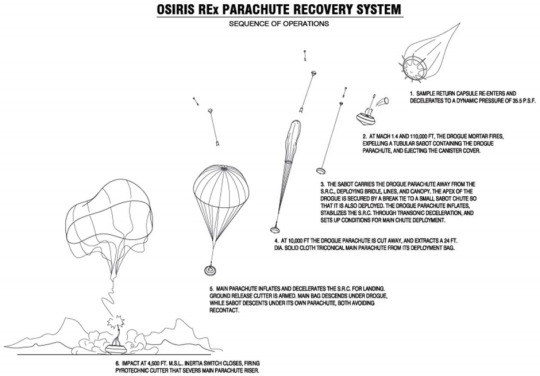

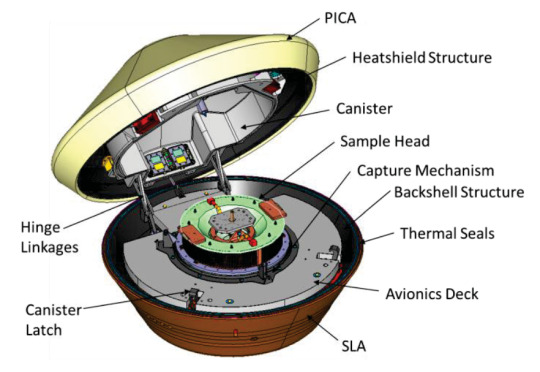
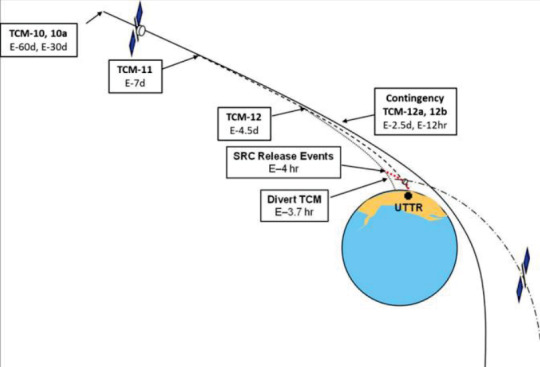

The Sample Return Capsule (SRC) will land today in the Utah Test and Training Range, south west of Utah City.
The OSIRIS Rex (Origins, Spectral Interpretation, Resource Identification, Security, Regolith Explorer) will release the SRC capsule at 11:42 BST (the spacecraft itself will then fire its engine to avoid Earth at 12:02 BST to fly-by at a distance of 485mi so it can continue on another mission). The SRC capsule will enter the Earths atmosphere at 15:42 BST at 12km/sec (feature than an Apollo/Orion reentry from the Moon) and will experience a deceleration of some 32g.
11:42BST (04:42MDT) E-04:00:00 SRC release
12:02 (05:02) E-03:07:00 OSIRIS Rex divert TCM burn (flyby 485mi)
15:00 (08:00) LANDING COVERAGE NASA TV
15:42 (08:42) 14:38:28UT E-0 Entry Interface
E+00:00:51 Maximum heating
E+00:00:61 Maximum G (31.8G)
* At 110,000ft and mach 1.4 drogue chute mortor fires. ejecting the canister cover and expelling a tubular sabot containing the drogue chute.
* Sabot chute deploys pulling out bridle, lines and canopy of drogue chute
E+00:02:25 Drogue Chute Deploy
* Drogue chute inflates, sabot and its chute detach via break tie
* 10,000ft drogue chute detach pulling out 24ft diameter main parachute from its deployment bag
E+00:07:06 Main Chute Deploy
* Main chute inflatesE+00:13:05 Touchdown
Pyrotechnic cutter severs main parachute riser
The recovery team will arrive in four helicopters, first a Lockheed Martin safety engineer will approach the capsule and measure the capsules temperature remotely to ascertain if it is safe to approach, next the atmosphere will be sampled and the area around the capsule will be inspected for any potential hazards.
Them a team from the University of Arizona lead by Principle Investigator Dante Lauretta will cordoned off the area around the Sample Return Capsule (SRC) with flags to denote a keep-out zone and then conduct environmental sampling in that area to build up a library of anything, air, soil, organic matter etc, which could possibly have contaminate the asteroid samples during the landing and recovery.
Once the capsule, weighing 45kg (100 lb), is ready for transport it will be lifted by two people into a metal transport crate and wrapped in multiple layers of Teflon and a tarpaulin. Next the wrapped crate will be fitted with a cargo harness and secured to a lift cable.
This will be attached to a hired Bell Jet Ranger helicopter (in rehearsal's anyway), as a slung load and flown to a hanger at Hill Air Force Base (the range HQ) equipped with a clean room (tent like structure in this case).
There the capsule will be opened and the sample canister will be extracted. The day after both the sample canister and the capsule will be flown to NASA’s Johnson Spaceflight Centre in Houston for storage and from there the sample will be divided and distributed to science investigator teams around the world.
Coverage on NASA TV from 3pm BST (10:00am EDT)... (the picture of the capsule under a parachute is from the recovery rehearsal conducted on 23 August 2023 which was dropped from a helicopter fro the rehearsal)
2 notes
·
View notes
Photo

Info from Wikipedia:
The Union Pacific Big Boy is a type of simple articulated 4-8-8-4 steam locomotive manufactured by the American Locomotive Company (ALCO) between 1941 and 1944 and operated by the Union Pacific Railroad in revenue service until 1962.
The 25 Big Boy locomotives were built to haul freight over the Wasatch Range between Ogden, Utah, and Green River, Wyoming. In the late 1940s, they were reassigned to Cheyenne, Wyoming, where they hauled freight over Sherman Hill to Laramie, Wyoming. They were the only locomotives to use a 4-8-8-4 wheel arrangement: four-wheel leading truck for stability entering curves, two sets of eight driving wheels and a four-wheel trailing truck to support the large firebox.
Today, eight Big Boys survive, with most on static display at museums across the USA. One of them, No. 4014, was re-acquired by Union Pacific, and between 2014 to 2019 it was rebuilt to operating condition for the 150th anniversary of the first transcontinental railroad. It thus regained the title as the largest and most powerful operating steam locomotive in the world.
In 1936, Union Pacific introduced the Challenger-type (4-6-6-4) locomotives on its main line over the Wasatch Range between Green River and Ogden. For most of the route, the maximum grade is 0.82% in either direction, but the climb eastward from Ogden, into the Wasatch Range, reached 1.14%. Hauling a 3,600-short-ton (3,300 t; 3,200-long-ton) freight train demanded double heading and helper operations, which slowed service. So Union Pacific decided to design a new locomotive that could handle the run by itself: faster and more powerful than the compound 2-8-8-0s that UP tried after World War I, able to pull long trains at a sustained speed of 60 miles per hour (100 km/h) once past mountain grades.
A Union Pacific design team led by Otto Jabelmann, the head of the Research and Mechanical Standards section of the Union Pacific's Mechanical Department, worked with ALCO (the American Locomotive Company) to re-examine their Challenger locomotives.[6] The team found that the railroad's goals could be achieved by enlarging the Challenger firebox to about 235 by 96 inches (5.97 m × 2.44 m) (about 150 sq ft or 14 m2), increasing boiler pressure to 300 psi, adding four driving wheels, and reducing the size of the driving wheels from 69 to 68 in (1,753 to 1,727 mm). The new locomotive was carefully designed not to exceed an axle loading of 67,800 lb (30,800 kg), and achieved the maximum possible starting tractive effort with a factor of adhesion of 4.0. It was designed to travel smoothly and safely at 80 miles per hour.
To achieve these new engineering goals, the Challenger locomotive was "comprehensively redesigned from first principles," wrote locomotive historian Tom Morrison. The overall design simplified some aspects of previous locomotive designs and added complexity elsewhere. Compounding, booster, and feed water heaters were eliminated, as were Baker valve gear and limited cut-off. But the "proliferation of valves and gauges on the backhead showed that running a Big Boy was an altogether more complicated and demanding task for the crew than running previous existing locomotives," Morrison wrote.
The 4-8-8-4 class series, originally rumored to be called the "Wasatch", after the Wasatch Mountains, acquired its nickname after an unknown ALCO worker scrawled "Big Boy" in chalk on the front of No. 4000's smokebox door, then under construction as the first of its class.
The Big Boys were articulated, like the Mallet locomotive design, though lacking the compounding of the Mallet. hey were built with a wide margin of reliability and safety, and normally operated well below 60 miles per hour (100 km/h) in freight service. Peak drawbar horsepower was reached at about 41 mph (66 km/h). The maximum drawbar pull measured during 1943 tests was 138,200 lbf (615,000 N) while starting a train.
The Big Boy has the longest engine body of any reciprocating steam locomotive, longer than two 40-foot buses. They were also the heaviest reciprocating steam locomotives ever built, the combined weight of the 772,250 lb (350,290 kg) engine and 436,500 lb (198,000 kg) tender outweighed a Boeing 747. There was some speculation that the first series of Chesapeake and Ohio 2-6-6-6 “Allegheny” locomotives, built by the Lima Locomotive Works in 1941, may have weighed as much as 778,200 lb (353,000 kg), exceeding the Big Boys, but subsequent re-weighs of early-production H8s, under close scrutiny by the builder and the railroad, found them to be less than 772,250 lb (350,290 kg).
The American Locomotive Company manufactured 25 Big Boy locomotives for Union Pacific: 20 in 1941 and five in 1944. Along with the Challengers, the Big Boys arrived on the scene just as traffic was surging in preparation for American participation in World War II.
The Big Boy locomotives had large grates to burn the low-quality bituminous coal supplied by Union Pacific-owned mines in Wyoming. Coal was carried from the tender to the firebox by a stoker motor, a steam engine driving an auger. Water was injected into the boiler by a Nathan 4000 live steam injector (up to 12,500 gallons per hour) on the right side and an Elesco T.P. 502 exhaust steam injector (up to 14,000 gallons per hour) on the left side. A Big Boy could consume more than 11 tons of coal and 12,000 gallons of water an hour. As an experiment, No. 4005 was converted to burn oil in 1946. Unlike a similar effort with the Challengers, the conversion failed due to uneven heating in the Big Boy's large, single-burner firebox.[20] The locomotive was converted back to coal in 1948. (Decades later, No. 4014 would be successfully converted to oil during its restoration.) Another experiment saw No. 4007 being modified with a single stack in October 1948. The results were unsatisfactory, and the locomotive reverted back to double stack. One final short-term experiment was the fitting of smoke deflectors on locomotive 4019, similar to those found on the railroad's FEF Series, as well as some of their Challengers. These were later removed, as the Big Boys' nozzle and blower in the smoke box could blow smoke high enough to keep engineers’ lines of sight clear.
The locomotives were held in high regard by crews, who found them sure-footed and more “user friendly” than other motive power. They were capable machines, and their rated hauling tonnage was increased several times over the years. But postwar increases in the price of coal and labor, along with the advent of efficient, cost-effective diesel-electric power, spelled the end of their operational lives. Nonetheless, they were among the last steam locomotives withdrawn from service on the Union Pacific. The last revenue train hauled by a Big Boy ended its run early in the morning on July 21, 1959. Most were stored operational until 1961; four remained in operational condition at Green River, Wyoming until 1962. Their duties were assumed by diesel locomotives and gas turbine-electric locomotives.
In 2019, Union Pacific completed the restoration of No. 4014 and placed it in excursion service. The locomotive was sent on a tour in celebration of the 150th anniversary of the completion of the First transcontinental railroad.
On April 27, 1953, No. 4005 was pulling a freight train through southern Wyoming when it jumped a switch track at 50 mph (80 km/h), throwing the engine onto its left side and derailing its tender and the first 18 freight cars of its 62-car train. The engineer and fireman were killed on impact; the brakeman died of severe burns in a hospital a few days later. The tender destroyed the cab of the locomotive, and the loads from the 18 derailed cars were scattered. Despite the heavy damage, the locomotive was repaired by Union Pacific at its Cheyenne facility and returned to service until 1962.
Most of the 25 Big Boys were scrapped, but seven remain on static display—two indoors and five outdoors, under the elements—and an eighth, Union Pacific 4014, was rebuilt to operating condition by Union Pacific's steam program.
models and route by: Trainz-Forge, Peter's Trainz, Auran, and Download Station
#UP#Union Pacific#Union Pacific Railroad#UP Big Boy#Union Pacific Big Boy#UP 4014#Union Pacific 4014#4014#Steam Locomotive#Trains#Trainz Simulator#Christmas#Advent Calendar#Christmas 2022 🎄🎅🎁
4 notes
·
View notes
Text
Top 10 best lash lift vendors in USA 2023
*****
Table of Contents
Art of Beauty
Elleebana Store USA
Paris Lash Academy
Our lash
Lash lift Store
Diablo Cosmetics
Foula-Store
Bella Lash
Lash Stuff
Lash Extend USA
*****

Top 1 Art of Beauty
Website:https://artofbeautyacademy.com/
Location:Dallas, New York, San Francisco, Atlanta, Los Angeles, Chicago, Miami
Tel :800-958-2443
Product:Lash lift and other lash products, Phi products
Introduction:Art of beauty Academy was started from 2012 in Italy and soon with years of experience of training and skilled techniques, they formed a community of lash masters, they tested and picked many qualified products to sell to their students and customers all over the world, their service almost around American, you can choose either their services or products near you.
Top 2 Elleebana Store USA
Website: https://elleebanastoreusa.com/
Location: Utah 84660, United States
Tel: (916) 206-8270
Product range: Lash lift, brow products, eyelash extensions
Introduction: Elleebana Store USA provides training and distribution lash lift in the U.S. Their product ranges from lash lift to eyelash extension products, they want to stay at the forefront of beauty trends and offer the highest quality services to all customers. The students can always get helps here on the way to be a beauty professional.
Top 3 Paris Lash Academy
Website: https://parislashacademy.com/
Location: Reno, NV, USA
Tel: 775-440-1208
Product range: Lash lift products, lash extensions and tools, nail products
Introduction: Paris lash academy is a famous training Academy in America, their lash products are recognized by lash technicians and you can always trust the quality and safety of the brand, if you need lash lift products, you can try it here.
Top 4 Our lash
Website: https://www.ourlash.com/
Location: Qingdao, China
Tel: +86 186 6170 3863
Product range: Private lash lift products, private lash extensions and tools
Introduction: Our lash is a famous eyelash manufacturer in eyelash areas, with 13 years’ experience in lash industry, Our lash always put product security first, constantly develop new products, and had provide high quality private brand for many distributors all over the world. If you have a plan for selling your private brand lash lift products, Our lash will be your good partner.
Top 5 Lash lift Store
Website: https://lashliftstore.com/
Location: St. George, Utah 84790, United States
Tel: (801) 850-7793
Product range: Lash lift, brow products, and training course and lash lift accessories.
Introduction: Lash lift store focuses on professional beauty products especially lash lift products, it’s a company runs by professional, for professional. They also have another brand called beautiful brows and lashes, they provide advanced education and world class products; you can enjoy a one-stop service here.
Top 6 Diablo Cosmetics
Website: https://us.diablocosmetics.com/
Location: USA
Contact: [email protected]
Product range: lash lift and other eyelash products, eyebrow products
Introduction: Diablo cosmetics is a professional cosmetics supplier, their products sell over the world and they aim to be your destination for at-home beauty products. Their lash lift products covers a wide range, you can find everything you need for lash lift here, they’re helping women on embrace their natural beauty, one lift at a time.
Top 7 Foula-Store
Website: https://www.foula-store.us/
Location: New York, USA
Tel: 917-409-5951
Product range: Lash lift, lash extension trays, accessories and liquids
Introduction: Foula Store has worldwide distribution networks and they have a wide range of products, from liquids to very small tools, all products are produced with high quality material and leading edge technology, you’re suggested to try the products here.
Top 8 Bella Lash
Website:https://bellalash.com/
Location:Unit B, USA
Tel:855-423-5525
Product range: Lash lift, lash extension trays, accessories and care products
Introduction: Bella lash have been in lash industry for the 12nd year, they offer accessible in-person and online training courses, all their lash products are tested and approved by their engineers and chemists team, they will help you on building up your business and provide you qualified products you need in your career.
Top 9 Lash Stuff
Website:https://www.lashstuff.com/
Location:Ogden Utah 84401,USA
Tel:1-385-393-1616
Product Range: Lash lift kits and supplies, lash extensions and tools, strip lashes,cosmetics and other cosmetic supplies
Introduction: With a wide range of products, Lash Stuff was started since 2012.They aim to make the eyelash industry better because they suffered from lack of good lashes; they started their own lash business by providing high quality products with fast shipping. Since Lash Stuff founded, it has raised the product and service level of the whole eyelash industry while helping lash stylists become more successful.
Top 10 Lash Extend USA
Website: https://lashextendusa.com/
Location: Kalamazoo Michigan, USA
Contact: (269) 447-9746
Product range: Lash lift products, lash extensions, lash tools and lash training
Introduction: From 2010 to 2022, Lash Extend USA had been in lash industry for 12 years. Their products had been tested by the market and by time, they also provide lash trainings as well as lash lift training, you can get lash lift trained here as well as buy lash lift products here.
3 notes
·
View notes
Text
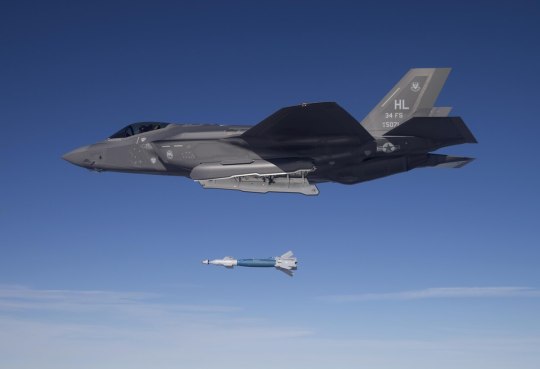
Putting warheads on foreheads
An F-35 from Hill AFB 34th FS drops a practice GBU-49 Enhanced Paveway II laser guided bomb at the Utah Test and Training Range
69 notes
·
View notes
Text
What it looks like as space capsule rips through Earth’s atmosphere
0 notes
